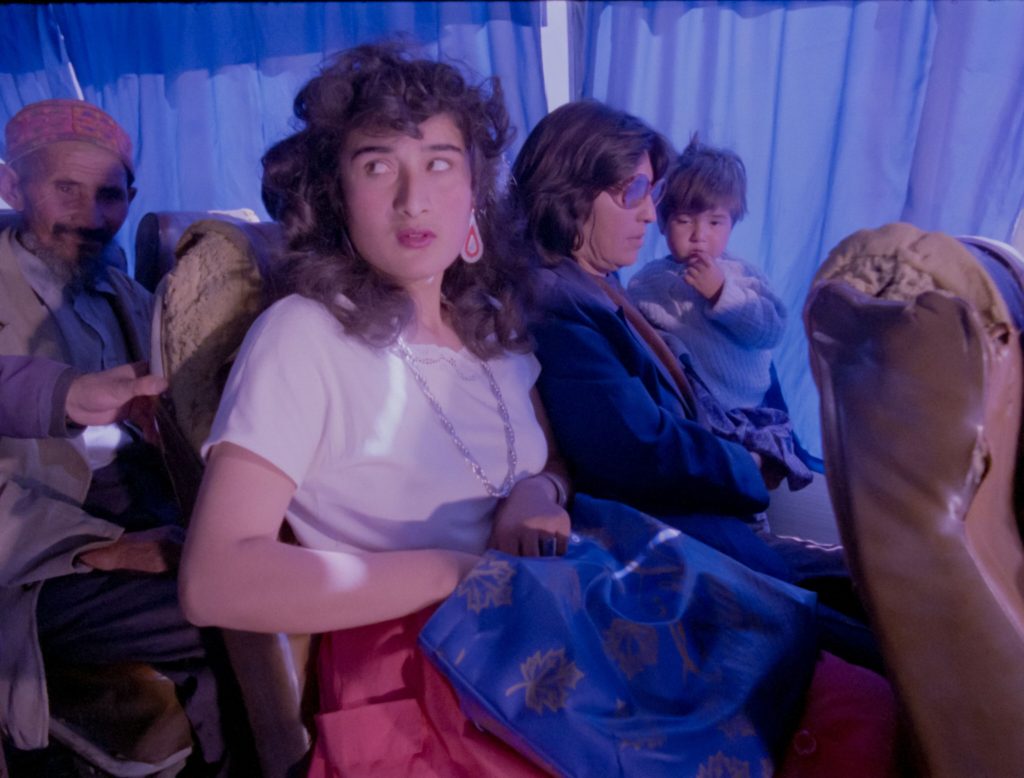Mariam Ghani is a visual artist whose first feature, “What We Left Unfinished,” premiered at 2019 Berlinale and won the Critics Choice Award at the Hot Springs Documentary Film Festival. She is currently in post-production on the feature “Dis-Ease,” a documentary about the consequences of a century-plus of waging metaphorical war on disease.
“What We Left Unfinished” premiered at the 2019 DOC NYC film festival on November 7.
W&H: Describe the film for us in your own words.
MG: “What We Left Unfinished” is about five unfinished films from the Communist-era in Afghanistan — that’s 1978-1991 — and the crazy lengths to which artists will go to keep making art in times of war, political repression, and censorship.
It’s also about the role that film plays in constructing national imaginaries, and the different versions of Afghanistan — both real and fictional — that have existed onscreen.
W&H: What drew you to this story?
MG: I started working with the Afghan national film archive back in 2012, helping them to put together a digitization project. That’s when I first heard a rumor of these unfinished films. To me, that was irresistible.
Unfinished projects are like loose threads in history — when you pull on them, you never know what will unravel. I started looking for the films and the people who made them.
A few years later, while the archive was re-cataloguing all their reels to prepare for digitization, a number of films turned up that had been believed lost, including most of the negatives for these five unfinished feature films.
W&H: What do you want people to think about when they are leaving the theater?
MG: That they never imagined Afghan film would look like that, which is to say, wild, weird, colorful, and — in the case of these particular films — more like Turkish ’80s action films than slow Iranian cinema.
Also, I’d like people to think about everything that’s left unsaid in the film — everything that had to be implied in the gaps between the images filmmakers made in the past and the words they were willing to share today — and why they might still be unwilling to tell all of their stories about that time.
W&H: What was the biggest challenge in making the film?
MG: Besides the formal challenge of constructing a film as much around what’s not said as what is said, and the incredibly fun technical challenge of creating soundscapes and Foley for all the silent archival footage?
We also had to get the whole film archive’s digitization project off the ground in order to get the archival footage digitized for our film. My Director of Photography, Adam Hogan, and I ran a Telecine training workshop during our Kabul shoot.
I prepaid some of my licensing fee in order to purchase crucial equipment, and the footage you see in our film was the very first footage digitized on the new Telecine setup by technicians we trained — and some of it had to be done twice.
W&H: How did you get your film funded? Share some insights into how you got the film made.
MG: This is an independent film and was quite difficult to fund for a number of reasons, but we were lucky enough to have some staunch supporters in the foundation world as well as some individual donors and a lot of in-kind support — from research in Russia through post at EMPAC.
Much of it came from the networks I’d built up over 18 years of producing my own work in the museum and gallery circuit.
W&H: What inspired you to become a filmmaker?
MG: The film “Measure of Distance” by Mona Hatoum, which I saw at her New Museum retrospective in 1998.
W&H: What’s the best and worst advice you’ve received?
MG: Best advice: If you’re pitching for the first time, do it as a team. It’s much easier to talk up your partner than to humblebrag about yourself — though it does get easier with practice.
Worst advice: To describe a film as something it’s not in order to get the meeting or the money. I don’t think this works, and it can end up locking in a permanent misunderstanding of what you’re trying to do.
W&H: What advice do you have for other female directors?
MG: Join groups — Film Fatales and A-Docs have both been incredibly helpful for me. One of the things I like best about the film world — versus the art world — is that so far filmmakers seem to be better at collective organizing!
W&H: Name your favorite woman-directed film and why.
MG: Well, I already cited “Measure of Distance.” Another one is Jane Campion’s “Bright Star,” which is so visually ravishing that it feels like a feature-length translation of the poetry it features.
W&H: What differences have you noticed in the industry since the #MeToo and #TimesUp movements launched?
MG: Parity pipelines, more opportunities explicitly carved out for women, female-identifying directors, and POC creators, and more honesty about the ways the current system doesn’t work equitably for everyone. But we still have a ways to go.







